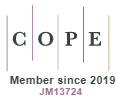A Survey on Contribution of Data Mining Techniques and Graph Reading Algorithms in Concept Map Generation
DOI:
https://doi.org/10.15415/jotitt.2018.62009Keywords:
Concept maps, big data, graphsAbstract
Concept maps are a pictorial representation of concepts found in data and it shows relationship between concepts. These Concept map help us to understand the whole data content, makes it easily readable and memorable. They are used to deliver complex data in an understandable form (map, tree, graph, etc), which is used for a better understanding and decision making for researchers and business, etc. This paper discusses the recent researches about concept maps and data mining techniques, and graph reading algorithms used for concept map generation.
Downloads
References
[2] S. C. O. Conceição, A. Samuel and S. M. Y. Biniecki, “Using concept mapping as a tool for conducting research: An analysis of three approaches”, University of Wisconsin Milwaukee UWM Digital Commons, vol. 3, no. 1, pp. 11-18, 2017.
[3] S. S. Tseng, P. C. Sue, J. F. Weng, Jui-Feng and J. M. Su, “A new approach for constructing the concept map: conference and education, IEEE International Conference on Advanced Learning Technologies, 2004.
[4] A. Nugumanova, M. Mansurova, E. Alimzhanov, D. Zyryanov and K. Apayev “Automatic generation of concept maps based on collection of teaching materials”, 4th International Conference on Data Management Technologies and Applications, January 2015.
[5] J. Villalon and A. C. Rafael, “Concept maps as cognitive visualizations of writing assignments”, Educational Technology & Society, vol. 14, no. 3, pp. 16–27, 2011.
[6] R. Katagall, R. Dadde, R. H. Goudar and S. Rao, “Concept mapping in education and semantic knowledge representation”, An illustrative survey: iccc, procedia computer science, vol. 48, pp. 638-643. 2015.
[7] D. Premchandran and B. V. V. S. Chalamayya, “Retrieving information through mind mapping tools for mining data”, International Journal of Scientific Research Engineering & Technology, vol. 7. no. 1, pp. 10-13, 2018.
[8] B. Lavanya, and V. J. Bai, “A study on predictive analysis on concept maps using data mining techniques”, International Journal of Advanced Research in Science, Engineering and Technology, vol. 5, no..10, pp. 7141-7144, 2018.
[9] D. Fawzy, S. Moussa and N. Badr, “The evolution of data mining techniques to big data analytics: an extensive study with application to renewable energy data analytics”, Asian Journal of Applied Sciences, vol. 4, no. 3, pp. 756-766, 2016.
[10] M. Nagalakshmi, I. S. Prabha and K. Anil, “Big data implementation of apriori algorithm for handling voluminous data-sets”, International Journal of Engineering and Technology, vol. 7, no. 1.5, pp. 217-220, (2018).
[11] B. Thillaieswari, “Comparative study on tools and techniques of big data analysis”, International Journal Of Advanced Networking & Applications, vol. 8, no. 5, pp. 61-66, 2017.
[12] M. Sinthuja, N. Puviarasan and P. Aruna, “Research of improved FP-growth (IFP) algorithm in association rules mining”, One Day National Conference On “Internet Of Things - The Current Trend In Connected World” NCIOT, pp. 24-31, 2018.
[13] A. Altameem and M. Ykhlef, “Hybrid approach for improving efficiency of apriori algorithm on frequent itemset”, International Journal of Computer Science and Network Security, vol. 18, no. 5, pp. 151-155, 2018.
[14] L. Shabtay, R. Yaari and I. Dattner, “A guided FP-growth algorithm for multitude-targeted mining of big data”, Cornell University, Arxiv.Org/Abs/1803.06632v2[July 5, 2018].
[15] S. Thakare, S. Rathi, R. R. Sedamkar, “An improved prepost algorithm for frequent pattern mining with Hadoop on cloud”, Procedia Computer Science, vol. 79, pp. 207-214, 2016.
[16] O. Obulesu, A. R. M. Reddy and M. Mahendra, “IOP Conf. Series: A Comparative study of frequent and maximal periodic pattern mining algorithms in spatiotemporal databases, Materials Science and Engineering, vol. 225, 2017.
[17] K. A. Baffour, C. Osei-Bonsu and A.F. Adekoya, “A modified apriori algorithm for fast and accurate generation of frequent itemsets”, International Journal of Scientific & Technology Research, vol. 6, no. 8, pp.169-173, 2017.
[18] S. N. Chary, B. Rama, “A survey on comparative analysis of decision tree algorithms in data mining”, International Conference On Innovative Applications In Engineering and Information Technology (ICIAEIT-2017), vol. 3, no. 1, pp. 91-95, 2017.
[19] J. P. P. Dur ́An, et. al, “Algorithm for extraction of subtrees of a sentence dependency parse tree”, Acta Polytechnica Hungarica, vol. 14, no. 3, 2017.
[20] R. Mishra, S. Shukla, D. Arora, M. Kumar, “An effective comparison of graph clustering algorithms via random graphs”, International Journal Of Computer Applications, vol. 22, no. 1, 2011.
[21] Y. Li, L. H. Lu., Y. C. Hung, “A new clustering algorithm based on graph connectivity”, Computing Conference 2018, 10-12 July 2018 J London, UK.
[22] H. Chen, M. Liu, Y. Zhao, X. Yan, D. Yan, and J. Cheng, “G-miner: An efficient task-oriented graph mining system”, The Thirteenth Eurosys Conference, Porto, Portugal, 2018.
[23] V. E. Lee, N. Ruan, R. Jin and C. Aggarwal, “A Survey of Algorithms for Dense Sub Graph Discovery”, Managing and Mining Graph Data, 40, 2010, pp. 303-336.
Downloads
Published
How to Cite
Issue
Section
License
Articles in Journal on Today's Ideas - Tomorrow's Technologies (J. Today’s Ideas - Tomorrow’s Technol.) by Chitkara University Publications are Open Access articles that are published with licensed under a Creative Commons Attribution- CC-BY 4.0 International License. Based on a work at https://jotitt.chitkara.edu.in. This license permits one to use, remix, tweak and reproduction in any medium, even commercially provided one give credit for the original creation.
View Legal Code of the above mentioned license, https://creativecommons.org/licenses/by/4.0/legalcode
View Licence Deed here https://creativecommons.org/licenses/by/4.0/
 |
Journal on Today's Ideas - Tomorrow's Technologies by Chitkara University Publications is licensed under a Creative Commons Attribution 4.0 International License. Based on a work at https://jotitt.chitkara.edu.in |











